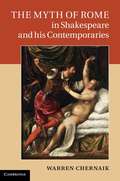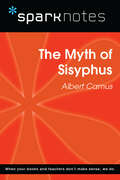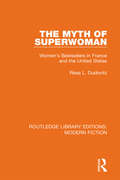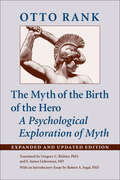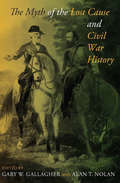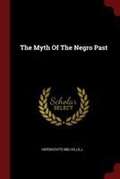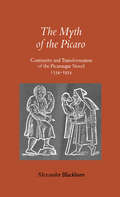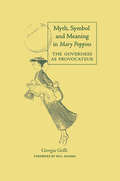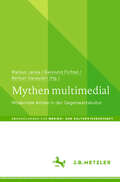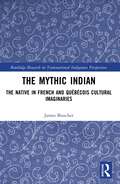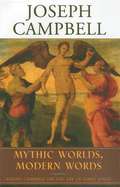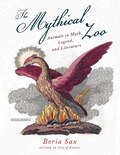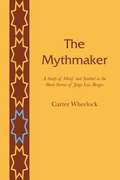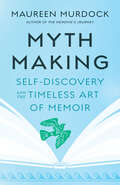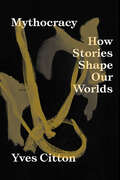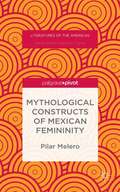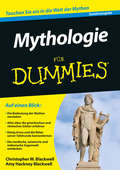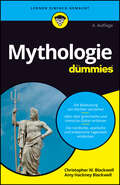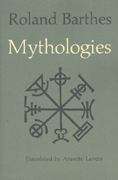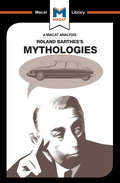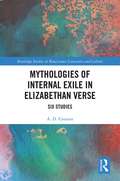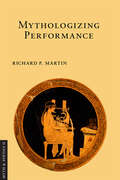- Table View
- List View
The Myth of Rome in Shakespeare and his Contemporaries
by Warren ChernaikWhen Cleopatra expresses a desire to die 'after the high Roman fashion', acting in accordance with 'what's brave, what's noble', Shakespeare is suggesting that there are certain values that are characteristically Roman. The use of the terms 'Rome' and 'Roman' in Julius Caesar, Antony and Cleopatra, or Jonson's Sejanus often carry the implication that most people fail to live up to this ideal of conduct, that very few Romans are worthy of the name. Chernaik demonstrates how, in these plays, Roman values are held up to critical scrutiny. The plays of Shakespeare, Jonson, Massinger and Chapman often present a much darker image of Rome, as exemplifying barbarism rather than civility. Through a comparative analysis of the Roman plays of Shakespeare and his contemporaries, and including detailed discussion of the classical historians Livy, Tacitus and Plutarch, this study examines the uses of Roman history - 'the myth of Rome' - in Shakespeare's age.
The Myth of Sisyphus (SparkNotes Philosophy Guide)
by SparkNotesThe Myth of Sisyphus (SparkNotes Philosophy Guide) Making the reading experience fun! SparkNotes Philosophy Guides are one-stop guides to the great works of philosophy–masterpieces that stand at the foundations of Western thought. Inside each Philosophy Guide you&’ll find insightful overviews of great philosophical works of the Western world.
The Myth of Superwoman: Women's Bestsellers in France and the United States (Routledge Library Editions: Modern Fiction #15)
by Resa L. DudovitzReviled by critics but loved by the readers, the bestseller has until recently provoked little serious critical interest. In The Myth of Superwoman, originally published in 1990, Resa Dudovitz looks at this international phenomenon, particularly at the origins of the bestseller system in the United States and France. Her cross-cultural study, including interviews with publishers, literary agents, and bestselling authors, gives a lively picture of the contrasting ways in which the bestseller is produced, marketed, and received in two countries. It pays special attention to the ‘international bestsellers’ of the 1980s, to writers like Judith Krantz, Colleen McCullough, and Barbara Taylor Bradford, all of whose novels are published in the United States, Britain, France, Germany, and Italy. The book presents a general analysis of women’s bestsellers, ranging over a wide variety of novels, from popular nineteenth-century texts in France and the United States to the novels of today. Dudovitz shows how women’s bestselling fiction has, over the last two hundred years, kept pace with the social evolution of contemporary women, culminating in the myth of superwoman in women’s bestsellers of the 1980s. This fascinating account of an important aspect of popular culture will be of great value to students of women’s studies and cultural studies, especially those interested in the myths which structure women’s bestselling fiction.
The Myth of the Birth of the Hero: A Psychological Exploration of Myth
by Otto RankFirst published in German in 1909, Otto Rank's original The Myth of the Birth of the Hero offered psychoanalytical interpretations of mythological stories as a means of understanding the human psyche. Like his mentor Sigmund Freud, Rank compared the myths of such figures as Oedipus, Moses, and Sargon with common dreams, seeing in both a symbolic fulfillment of repressed desire. In a new edition published thirteen years after the original, Rank doubled the size of his seminal work, incorporating new discoveries in psychoanalysis, mythology, and ethnology. This expanded and updated edition has been eloquently translated by Gregory C. Richter and E. James Lieberman and includes an introductory essay by Robert A. Segal as well as Otto Rank's 1914 essay "The Play in Hamlet."
The Myth of the Lost Cause and Civil War History
by Gary W. Gallagher and Alan T. Nolan, EditorsA &“well-reasoned and timely&” (Booklist) essay collection interrogates the Lost Cause myth in Civil War historiography. Was the Confederacy doomed from the start in its struggle against the superior might of the Union? Did its forces fight heroically against all odds for the cause of states&’ rights? In reality, these suggestions are an elaborate and intentional effort on the part of Southerners to rationalize the secession and the war itself. Unfortunately, skillful propagandists have been so successful in promoting this romanticized view that the Lost Cause has assumed a life of its own. Misrepresenting the war&’s true origins and its actual course, the myth of the Lost Cause distorts our national memory. In The Myth of the Lost Cause and Civil War History, nine historians describe and analyze the Lost Cause, identifying ways in which it falsifies history—creating a volume that makes a significant contribution to Civil War historiography. &“The Lost Cause . . . is a tangible and influential phenomenon in American culture and this book provides an excellent source for anyone seeking to explore its various dimensions.&” —Southern Historian
The Myth of the Negro Past
by Melville J HerskovitsAlmost fifty years ago Melville Herskovits set out to debunk the myth that black Americans have no cultural past. Originally published in 1941, his unprecedented study of black history and culture recovered a rich African heritage in religious and secular life, the language and arts of the Americas.
The Myth of the Picaro: Continuity and Transformation of the Picaresque Novel, 1554-1954
by Alexander BlackburnThis critical interpretation of the origins of modern fiction follows the transformation of the picaresque novel over four centuries through the literature of Spain, France, England, Germany, Russia, and the United States. Blackburn uses for the first time the resources of myth criticism to demonstrate how the picaresque masterpieces of the Spanish Golden Age founded a narrative structure that was continued by Defoe, Smollett, Melville, Twain, and Mann.Originally published in 1979.A UNC Press Enduring Edition -- UNC Press Enduring Editions use the latest in digital technology to make available again books from our distinguished backlist that were previously out of print. These editions are published unaltered from the original, and are presented in affordable paperback formats, bringing readers both historical and cultural value.
Myth, Ritual, and the Warrior in Roman and Indo-European Antiquity
by Roger D. WoodardThis book examines the figure of the returning warrior as depicted in the myths of several ancient and medieval Indo-European cultures. In these cultures, the returning warrior was often portrayed as a figure rendered dysfunctionally destructive or isolationist by the horrors of combat. This mythic portrayal of the returned warrior is consistent with modern studies of similar behavior among soldiers returning from war. Roger Woodard's research identifies a common origin of these myths in the ancestral proto-Indo-European culture, in which rites were enacted to enable warriors to reintegrate themselves as functional members of society. He also compares the Italic, Indo-Iranian, and Celtic mythic traditions surrounding the warrior, paying particular attention to Roman myth and ritual, notably to the etiologies and rites of the July festivals of the Poplifugia and Nonae Caprotinae, and to the October rites of the Sororium Tigillum.
Myth, Symbol, and Meaning in Mary Poppins: The Governess As Provocateur (Children's Literature and Culture #41)
by Giorgia GrilliThe Mary Poppins that many people know of today--a stern, but sweet, loveable, and reassuring British nanny--is a far cry from the character created by Pamela Lyndon Travers in the 1930's. Instead, this is the Mary Poppins reinvented by Disney in the eponymous movie. This book sheds light on the original Mary Poppins, Myth, Symbol, and Meaning in Mary Poppins is the only full-length study that covers all the Mary Poppins books, exposing just how subversive the pre-Disney Mary Poppins character truly was. Drawing important parallels between the character and the life of her creator, who worked as a governess herself, Grilli reveals the ways in which Mary Poppins came to unsettle the rigid and rigorous rules of Victorian and Edwardian society that most governesses embodied, taught, and passed on to their charges.
Mythen multimedial: Modernste Antike in der Gegenwartskultur (Abhandlungen zur Medien- und Kulturwissenschaft)
by Markus Janka Raimund Fichtel Berkan SariaydinEtwa seit der Jahrtausendwende ist ein internationaler und nach wie vor anhaltender Boom von Adaptionen der griechisch-römischen Mythologie und Historie zu verzeichnen. Dieser ist durch eine bemerkenswerte mediale Vielfalt und Vernetzungsfreude gekennzeichnet. Folglich erstreckt sich die „modernste Antike“ unserer Zeit nicht nur auf hochliterarische Texte oder Neuinszenierungen antiker Dramen auf dem Theater, sondern entfaltet auch in gegenwärtigen Massenmedien vom Historienroman, dem Comic bis hin zum Hypermedium Themenpark und zum Alltagsmedium Internet seinen Wandlungsreichtum. Mithin scheint die Zeit der postmodernen Renaissance der Antike angebrochen zu sein. Die vielschichtigen Phänomene, die sich der altertumswissenschaftlichen Antikenrezeptionsforschung als Gegenstände bieten, sind mit dem Philosophen Hans Blumenberg (1920–1996) zu verstehen als Erscheinungsformen einer modernen Arbeit am Mythos. Als solche eröffnen sie Anschlussmöglichkeiten für neue Geschichten und Verfahrensmöglichkeiten zur ästhetischen und ethischen Auseinandersetzung mit den eigenen Grundfragen menschlichen Daseins im Spannungsfeld von Veralltäglichung und Entalltäglichung. Diese Forschungsaufgabe ist bislang in zahlreichen, teilweise weit verstreuten Einzeluntersuchungen angegangen worden. Oft handelt es sich um Fallstudien oder Ansätze zur Bündelung des reichen Materials. Dies hat zu einer erheblichen fachlichen und methodischen Heterogenität der Zugänge geführt. Dabei werden die sprach-, kulturraumspezifischen und medialen Unterschiede und Zusammenhänge in den Adaptionsstrategien allerdings oft nicht hinreichend reflektiert. Diese Lücke will dieser Band mit seiner synthetisierenden Anlage schließen. Er setzt sich zum Ziel, im Dialog der Fächer die als aussichtsreich erkannten Forschungsfelder vorzustellen. Innerhalb dieser Themenbereiche werden Untersuchungsdesigns für eine betont interdisziplinäre und intermediale Methodik erprobt. Diese streben eine systematische Zwischenbilanz der bisherigen Forschungserträge an und haben das Ziel, die bisherigen Ansätze synergetisch zu verweben. Der Band schafft eine Grundlage, um im Zusammenwirken der Disziplinen die Präsenz und die Bedeutung von Mythos und Historie der griechisch-römischen Antike in den europäischen Sprach- und Kulturräumen der Gegenwart punktgenau untersuchen und einordnen zu können.
The Mythic Indian: The Native in French and Québécois Cultural Imaginaries (Routledge Research in Transnational Indigenous Perspectives)
by James BoucherThe Mythic Indian: The Native in French and Québécois Cultural Imaginaries charts a genealogy of French and Québécois visions of the Amerindian. Tracing an evolution of paradigms from the sixteenth century to present, it examines how the myths of the Noble, Ignoble, and Ecological Savage as well as the Vanishing Indian and Going Native inform a variety of discourses and ways of thinking about Québécois culture. By analyzing mythic depictions of the Native Figure that originate at first contacts, this book demonstrates that an inextricable link exists between discourses as disparate as literature and science.This book will be of interest to scholars in French Studies, Francophone Studies, Indigenous Studies, Hemispheric Studies, Social Sciences, and Literary Studies.
Mythic Voices: Reflections in Mythology
by Celia Barker Lottridge Alison DickieMyths have been remembered and retold because they express things that are important to people. This book is a selective compilation of such myths from various parts of the world.
Mythic Worlds, Modern Worlds: On the Art of James Joyce
by Joseph CampbellMythic Worlds, Modern Words provides a representation of Campbell’s published writing, lectures on Joyce, and exchanges with his audiences, from his obituary notice on Joyce in 1941 to lectures delivered a few years before Campbell’s death.
The Mythical Zoo: Animals in Myth, Legend, and Literature
by Boria SaxA beautifully illustrated alternate taxonomy of the animal kingdom, based on mythology, literature, art, and other cultural realms: &“Charming.&” —ForeWord Sacred cows, wily serpents, fearsome lions, elegant swans, busy bees, and sly foxes—all are caricatures of the creatures themselves, yet they reflect not only how different cultures see the natural world around them but also how such cultures make use of their native animals. In this fun and thought-provoking book, historian and animal enthusiast Boria Sax argues for a classification of animals that goes beyond the biological to encompass a more meaningful distinction: tradition. From ants and elephants to tigers and tortoises, The Mythical Zoo weaves together a cross-cultural tapestry encompassing mythology, history, art, science, philosophy, and literature. The result is a beautifully illustrated, masterfully composed love letter to the animal kingdom.
The Mythmaker: A Study of Motif and Symbol in the Short Stories of Jorge Luis Borges
by Carter WheelockReaders who are intrigued, though often mystified, by the intellectual fantasies of Jorge Luis Borges will find this book a revelation, a skeleton key to one of the most fundamental and baffling aspects of Borges’s fictions: the pattern of symbolism with an inner meaning. Carter Wheelock’s study reduces a number of literary and intellectual abstractions to concrete terms, enabling the reader to understand Borges’s fantasies in ways that show them to be not so fantastic after all. Indeed, they are amazingly consistent and minutely accurate in their symbolic depiction of the magic universe of the mind. Wheelock also discusses the affinity between Borges’s philosophical idealism and his “esthetic of the intelligence,” the relationship between these and the esthetic ideas of French Symbolism, and the influence on his fictions of the Rubáiyát of Omar Khayyám. Why is it that this “writer’s writer” from the Argentine—erudite, allusive, elusive—has attracted such international attention? In Wheelock’s opinion, it is because he has symbolized in his short stories the fundamental form of the human consciousness, the functioning of the imaginative (world-creating) mechanism, and the eternal battle between form and chaos. The Mythmaker is concerned with elucidating the particulars of Borges’s fictional works, but even as it does so it also reveals their universality.
Mythmaking: Self-Discovery and the Timeless Art of Memoir
by Maureen MurdockBest-selling Heroine&’s Journey author Maureen Murdock invites readers to explore their personal story within the rich tapestry of human experience by examining the craft of memoir alongside fresh writing advice and prompts.Maureen Murdock looks at thematic connections between ancient myths and contemporary memoirs to probe questions like: What is my journey? Where is home? Her background as a Jungian psychotherapist enriches her teaching—urging us to dig deep to identify our own universal archetypes.Writers who feel stuck or unworthy of writing about themselves will find thought-provoking inspiration and validation in this book, while those simply looking to use writing as a tool for self-exploration will examine their patterns and stories to reveal their true inner selves. And all will be left with a deeper understanding of the rich scope of the memoir genre by exploring contemporary favorites—like Terry Tempest Williams&’s Refuge, Joan Didion&’s The Year of Magical Thinking, and David Carr&’s The Night of the Gun—from a mythological perspective.Like myth, memoir reveals a unity to human experience that ultimately we all share similar hopes, dreams, and desires as well as fears, losses, and heartbreaks. Memoir helps writers understand the trajectory of their lives and helps readers better grasp our own place within the human experience.
Mythocracy: How Stories Shape Our Worlds
by null Yves CittonHarnessing the power of storytelling for political progressMythocracy examines the narrative mechanisms that script our lives through the stories we tell one another. Digging beneath common anxieties about fake news, Yves Citton looks at the attention economy, which organises our political perceptions around affective attractors. These are much more powerful than the truth value of any given narrative. The time has come for the left to reclaim the power of myth from reactionary populism.
Mythological Constructs of Mexican Femininity
by Pilar MeleroLa Virgen de Guadalupe, la Malinche, la Llorona, and la Chingada reflect different myths of motherhood in Mexican culture. Mythological Constructs of Mexican Femininity explores the texts of Nellie Campobello, Juana Belen Gutierrez de Mendoza, Sara Estela Ramirez, and Andrea Villarreal Gonzalez to examine their use of motherhood as a political discursive position. Grounded on a postcolonial theoretical framework, and on the writings about womanhood and motherhood by Gabriela Mistral, Antonieta Rivas Mercado, Victoria Ocampo, and Rosario Castellanos, this book seeks to create a basis for the examination of non-canonical texts by Mexican women, but will also be useful in the examination of other marginal voices about femininity in Latin America and in Chicanx/Latinx studie. It also recognizes the value of analyzing writing through the ideas of Latin American female intellectuals who have theorized motherhood and womanhood and who know and understand the mythological constructs of (Latin American) feminisms. "
Mythologie für Dummies (Für Dummies)
by Christopher W. Blackwell Amy Hackney BlackwellAlles von Aphrodite bis Zarathustra Mythologie ist spannender als jeder Krimi, grausamer als jeder Horrorfilm und leidenschaftlicher als jeder Liebesroman. Aber wie hieß noch gleich der Meeresgott der Griechen? Was geschah bei der Götterdämmerung? Und wer gehörte zu König Artus‘ Tafelrunde? Antworten auf diese und viele weitere Fragen finden Sie in diesem Buch, das zum Schmökern einlädt und wunderbar als Nachschlagewerk dient. Neben der griechischen und römischen Mythologie erfahren Sie alles Wissenswerte zu den nordischen Sagen wie den Nibelungen und Beowulf, zu Mythen aus Ägypten und Asien sowie zu den Erzählungen der Inka, Maya und Azteken.
Mythologie für Dummies (Für Dummies)
by Christopher W. Blackwell Amy Hackney BlackwellMythologie ist spannender als jeder Krimi, grausamer als jeder Horrorfilm und leidenschaftlicher als jeder Liebesroman! Wie hieß er doch noch gleich, der Meeresgott bei den Griechen? Was waren bloß die zehn Aufgaben des Herkules? Antworten auf solch typische Fragen nach dem Motto "Wie war das nochmal?" finden Sie in diesem wunderbaren Nachschlagewerk, das zum Schmökern einlädt. Der Schwerpunkt des Buches liegt auf der griechischen und römischen Mythologie, aber auch nordeuropäische Gestalten wie König Artus und Beowulf, weniger bekannte Sagen aus Ägypten und Asien und die Mythen lateinamerikanischer Völker wie den Maya, Azteken und Inkas kommen nicht zu kurz.
Mythologies
by Roland Barthes Annette LayersThe following essays were written one each month for about two years, from 1954 to 1956, on topics suggested by current events. I was at the time trying to reflect regularly on some myths of French daily life. The media which prompted these reflections may well appear heterogeneous (a newspaper article, a photograph in a weekly, a film, a show, an exhibition), and their subject-matter very arbitrary: I was of course guided by my own current interests. The starting point of these reflections was usually a feeling of impatience at the sight of the 'naturalness' with which newspapers, art and common sense constantly dress up a reality which, even though it is the one we live in, is undoubtedly determined by history. In short, in the account given of our contemporary circumstances, I resented seeing Nature and History confused at every turn, and I wanted to track down, in the decorative display of what-goes-without-saying, the ideological abuse which, in my view, is hidden there.
Mythologies
by John GomezMythologies is a masterpiece of analysis and interpretation. At its heart, Barthes’s collection of essays about the “mythologies” of modern life treats everyday objects and ideas – from professional wrestling, to the Tour de France, to Greta Garbo’s face – as though they are silently putting forward arguments. Those arguments are for modernity itself, the way the world is, from its class structures, to its ideologies, to its customs. In Barthes’s view, the mythologies of the modern world all tend towards one aim: making us think that the way things are, the status quo, is how they should naturally be. For Barthes, this should not be taken for granted; instead, he suggests, it is a kind of mystification, preventing us from seeing things differently or believing they might be otherwise. His analyses do what all good analytical thinking does: he unpicks the features of the arguments silently presented by his subjects, reveals their (and our) implicit assumptions, and shows how they point us towards certain ideas and conclusions. Indeed, understanding Barthes’ methods of analysis means you might never see the world in the same way again. Six skills combine to make up our ability to think critically. Mythologies is an especially fine example of a work that uses the skills of analysis and creative thinking.
Mythologies of Internal Exile in Elizabethan Verse: Six Studies (Routledge Studies in Renaissance Literature and Culture)
by A.D. CousinsWriters of the English Renaissance, like their European contemporaries, frequently reflect on the phenomenon of exile—an experience that forces the individual to establish a new personal identity in an alien environment. Although there has been much commentary on this phenomenon as represented in English Renaissance literature, there has been nothing written at length about its counterpart, namely, internal exile: marginalization, or estrangement, within the homeland. This volume considers internal exile as a simultaneously twofold experience. It studies estrangement from one’s society and, correlatively, from one’s normative sense of self. In doing so, it focuses initially on the sonnet sequences by Sidney, Spenser, and Shakespeare (which is to say, the problematics of romance); then it examines the verse satires of Donne, Hall, and Marston (likewise, the problematics of anti-romance). This book argues that the authors of these major texts create mythologies—via the myths of (and accumulated mythographies about) Cupid, satyrs, and Proteus—through which to reflect on the doubleness of exile within one’s own community. These mythologies, at times accompanied by theologies, of alienation suggest that internal exile is a fluid and complex experience demanding multifarious reinterpretation of the incongruously expatriate self. The monograph thus establishes a new framework for understanding texts at once diverse yet central to the Elizabethan literary achievement.
Mythologies of the Prophet Muhammad in Early Modern English Culture
by Matthew DimmockThe figure of 'Mahomet' was widely known in early modern England. A grotesque version of the Prophet Muhammad, Mahomet was a product of vilification, caricature and misinformation placed at the centre of Christian conceptions of Islam. In Mythologies of the Prophet Muhammad in Early Modern English Culture Matthew Dimmock draws on an eclectic range of early modern sources – literary, historical, visual – to explore the nature and use of Mahomet in a period bounded by the beginnings of print and the early Enlightenment. This fabricated figure and his spurious biography were endlessly recycled, but also challenged and vindicated, and the tales the English told about him offer new perspectives on their sense of the world – its geographies and religions, near and far – and their place within it. This book explores the role played by Mahomet in the making of Englishness, and reflects on what this might reveal about England's present circumstances.
Mythologizing Performance (Myth and Poetics II)
by Richard P. MartinBuilding on numerous original close readings of works by Homer, Hesiod, and other ancient Greek poets, Richard P. Martin articulates a broad and precise poetics of archaic Greek verse. The ancient Greek hexameter poetry of such works as the Iliad and the Odyssey differ from most modern verbal art because it was composed for live, face-to-face performance, often in a competitive setting, before an audience well versed in mythological and ritual lore. The essays collected here span Martin's acclaimed career and explore ways of reading this poetic heritage using principles and evidence from the comparative study of oral traditions, literary and speech-act theories, and the ethnographic record.Among topics analyzed in depth are the narrative structures of Homer's epics, the Hesiodic Works and Days, and the Homeric Hymn to Apollo; the characterization of poetic and musical performers within the poems; the social context for verses ascribed to the legendary singer Orpheus; the significance of various rituals as stylized by poetic performances; and the interrelations, at the level of diction and theme, among the major genres of epic and hymn, as well as "genres of speaking" such as lament, praise, advice, and proverbial wisdom.
